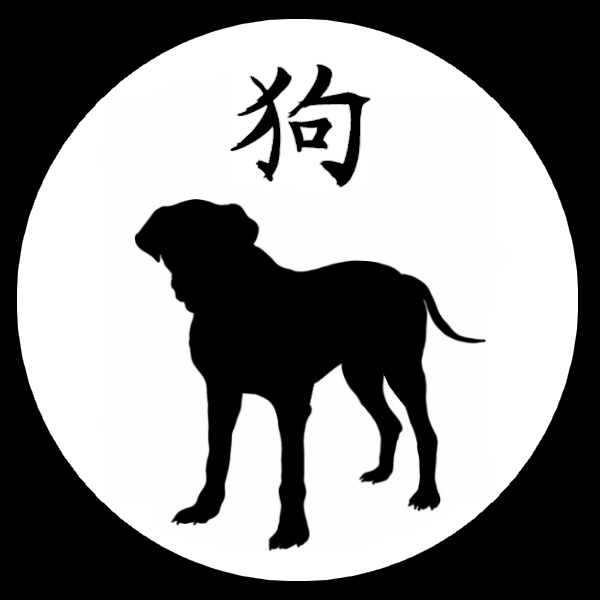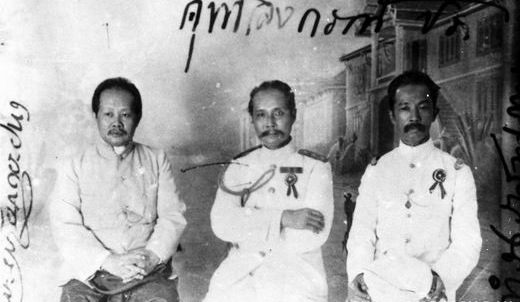|
Chang Rongsi Bridge
Chang Rong Si Bridge ( th, สะพานช้างโรงสี, , ) is a bridge and monument in the Rattanakosin Island area of Phra Nakhon District, the historic centre of Bangkok. The bridge spans Khlong Khu Mueang Doem, the old city moat, and is locate behind the Ministry of Defense and at the front corner of the Ministry of Interior. It signifies the beginning of Bamrung Mueang Road as it continues eastward from Kanlayana Maitri Road. Atsadang Road meets the bridge's eastern foot at the eponymous Saphan Chang Rong Si Intersection, while Rachini Road runs alongside the canal on the opposite side. The bridge was originally built for elephants that returned from war and was located near a rice mill, hence came the name "Saphan Chang Rong Si", which literally means "elephants' bridge at rice mill". It was originally a wooden bridge and there were three similar bridges which were later demolished. During the reign of King Chulalongkorn (Rama V), the bridge was restored ... [...More Info...] [...Related Items...] OR: [Wikipedia] [Google] [Baidu] |
Saranrom Palace
Saranrom Royal Palace ( th, พระราชวังสราญรมย์), is a former palace in Bangkok, Thailand, located between Grand Palace and Wat Ratchapradit. It served as temporary residence for some princes and as lodging for royal guests. It is now the site of the Museum of the Ministry of Foreign Affairs and Saranrom Park. History Saranrom Palace is a two-storey brick building designed by Henry Alabaster, deputy consul general to the British Embassy and advisor to the King. The construction started in 1866, Originally King Rama IV planned to retire to this palace to live in retirement as advisor on state affairs and decided to give the throne to his heir Prince Chulalongkorn but King Rama IV died in 1868 before completion of the construction. Early in the reign of King Rama V, the king granted this palace to the princes as a temporary residence when they moved out of the Grand Palace such as Prince Chaturonrasmi and Prince Bhanurangsi Savangwongse. Later on, ... [...More Info...] [...Related Items...] OR: [Wikipedia] [Google] [Baidu] |
Atsadang Road
Atsadang Road ( th, ถนนอัษฎางค์, , ) is a road in inner Bangkok (Rattanakosin Island) overlaps four Subdistricts of Phra Nakhon District, Bowon Niwet, San Chaopho Suea, Wat Ratchabophit, and Wang Burapha Phirom. It's starting from Ratchadamnoen Avenue in the area beside Sanam Luang and Phan Phiphop Lila Bridge pass through to the end at the junction of Chakkraphet Road and Charoen Rat 31 Bridge in the area of Pak Khlong Talat behind Ban Mo neighbourhood near the Chao Phraya River. There's Khlong Khu Mueang Doem (''old city moat'') or Khlong Lot (''tube canal'') parallel along the length. The opposite is Rachini Road. Its name "Atsadang" in honour of Prince Asdang Dejavudh, who was a son of King Chulalongkorn (Rama V) and Queen Saovabha Phongsri, includes the younger brother of King Vajiravudh (Rama VI). There're many places where this road passes. Most of them are historical sites such as Wat Buranasirimattayaram, Charoen Si 34 Bridge, Samphraeng neighb ... [...More Info...] [...Related Items...] OR: [Wikipedia] [Google] [Baidu] |
Bridges In Bangkok
A bridge is a structure built to span a physical obstacle (such as a body of water, valley, road, or rail) without blocking the way underneath. It is constructed for the purpose of providing passage over the obstacle, which is usually something that is otherwise difficult or impossible to cross. There are many different designs of bridges, each serving a particular purpose and applicable to different situations. Designs of bridges vary depending on factors such as the function of the bridge, the nature of the terrain where the bridge is constructed and anchored, and the material used to make it, and the funds available to build it. The earliest bridges were likely made with fallen trees and stepping stones. The Neolithic people built boardwalk bridges across marshland. The Arkadiko Bridge (dating from the 13th century BC, in the Peloponnese) is one of the oldest arch bridges still in existence and use. Etymology The ''Oxford English Dictionary'' traces the origin of the ... [...More Info...] [...Related Items...] OR: [Wikipedia] [Google] [Baidu] |
Ancient Monument (Thailand)
The conservation and management of Thailand's cultural heritage falls largely under the purview of the Fine Arts Department, under the framework of the Act on Ancient Monuments, Antiques, Objects of Art and National Museums, B.E. 2504 (1961). Under the law, the department has authority to manage and protect architectural sites (referred to as "ancient monuments" ( th, โบราณสถาน, )), antiques (, ''borannawatthu'') and ''objets d'art'' (, ''sinlapawatthu'') of significant artistic, historical, or archaeological value. It is also responsible for operating national museums for the safekeeping of such artefacts. , the Department lists 5,678 ancient monuments, 2,087 of which have officially been registered (including 10 historical parks). It operates 43 national museums throughout the country. Other institutions are also involved in the field, including universities, professional organizations, and public and private museums. Thailand signed the World Heritage Conventio ... [...More Info...] [...Related Items...] OR: [Wikipedia] [Google] [Baidu] |
Thai PBS
The Thai Public Broadcasting Service ( th, องค์การกระจายเสียงและแพร่ภาพสาธารณะแห่งประเทศไทย; ), or TPBS ( th, ส.ส.ท.), is a public broadcasting service in Thailand. It was established by the Thai Public Broadcasting Service Act, BE 2551 (2008), which came into force on 15 January 2008. Under this act, TPBS holds the status of state agency with legal personality, but is not a government agency or state enterprise. TPBS operates Thai PBS (ไทยพีบีเอส), which was formerly known as iTV, TITV and TV Thai television station, respectively. Thai PBS is a public television station broadcasting on UHF Channel 29. The station broadcasts on a frequency formerly held by the privately run channel, iTV. Thai PBS tested its broadcast by connecting to a temporary signal for broadcasting to the special programs chart which had been appropriated by Television of Thailand (TVT or ... [...More Info...] [...Related Items...] OR: [Wikipedia] [Google] [Baidu] |
Chinese Zodiac
The Chinese zodiac is a traditional classification scheme based on the lunar calendar that assigns an animal and its reputed attributes to each year in a repeating twelve-year cycle. Originating from China, the zodiac and its variations remain popular in many East Asian and Southeast Asian countries, such as Japan, South Korea, Vietnam, Singapore, Nepal, Bhutan and Thailand. Identifying this scheme using the generic term "''zodiac''" reflects several superficial similarities to the Western zodiac: both have time cycles divided into twelve parts, each labels at least the majority of those parts with names of animals, and each is widely associated with a culture of ascribing a person's personality or events in their life to the supposed influence of the person's particular relationship to the cycle. Nevertheless, there are major differences between the two: the animals of the Chinese zodiac are not associated with constellations spanned by the ecliptic plane. The Chinese twelve- ... [...More Info...] [...Related Items...] OR: [Wikipedia] [Google] [Baidu] |
Dog (zodiac)
The Dog ( 狗) is eleventh of the 12-year cycle of animals which appear in the Chinese zodiac related to the Chinese calendar. The Year of the Dog is associated with the Earthly Branch symbol 戌. The character 狗, also refers to the actual animal while 戌, also refers to the zodiac animal. Years and the Five Elements People born within these date ranges can be said to have been born in the "Year of the Dog", while also bearing the following elemental sign: Basic astrology elements 2018 In the sexagenary cycle, 2018 (16 February 2018–4 February 2019, and every 60-year multiple before and after), is the Celestial stem/Earthly Branch year indicated by the characters 戊戌. For the 2018 Year of the Dog, many countries and regions issued lunar new year stamps. These included countries where the holiday is traditionally observed as well as countries in the Americas, Africa, Europe and Oceania. The U.S.-China Institute at USC created a web collection of more than 10 ... [...More Info...] [...Related Items...] OR: [Wikipedia] [Google] [Baidu] |
Damrong Rajanubhab
Prince Tisavarakumarn, the Prince Damrong Rajanubhab (Thai: ; Full transcription is "Somdet Phrachao Borommawongthoe Phra-ongchao Ditsawarakuman Kromphraya Damrongrachanuphap" (สมเด็จพระเจ้าบรมวงศ์เธอ พระองค์เจ้าดิศวรกุมาร กรมพระยาดำรงราชานุภาพ)) (21 June 1862 – 1 December 1943) was the founder of the modern Thai educational system as well as the modern provincial administration. He was an autodidact, a (self-taught) historian, and one of the most influential Thai intellectuals of his time. Born as ''Phra Ong Chao Tisavarakumarn'' (พระองค์เจ้าดิศวรกุมาร; "Prince Tisavarakumarn"), a son of King Mongkut with Consort Chum (เจ้าจอมมารดาชุ่ม; Chao Chom Manda Chum), a lesser royal wife; he initially learned Thai and Pali from private tutors, and English at the Royal School with Mr. F ... [...More Info...] [...Related Items...] OR: [Wikipedia] [Google] [Baidu] |
Chulalongkorn
Chulalongkorn ( th, จุฬาลงกรณ์, 20 September 1853 – 23 October 1910) was the fifth monarch of Siam under the House of Chakri, titled Rama V. He was known to the Siamese of his time as ''Phra Phuttha Chao Luang'' (พระพุทธเจ้าหลวง, the Royal Buddha). Chulalongkorn's reign was characterised by the modernisation of Siam, governmental and social reforms, and territorial concessions to the British and French. As Siam was surrounded by European colonies, Chulalongkorn, through his policies and acts, ensured the independence of Siam. All his reforms were dedicated to ensuring Siam's independence given the increasing encroachment of Western powers, so that Chulalongkorn earned the epithet ''Phra Piya Maharat'' (พระปิยมหาราช, the Great Beloved King). Early life King Chulalongkorn was born on 20 September 1853 to King Mongkut and Queen Debsirindra and given the name Chulalongkorn. In 1861, he was designated ' ... [...More Info...] [...Related Items...] OR: [Wikipedia] [Google] [Baidu] |
Rachini Road
250px, Khlong Khu Mueang Doem (''old moat city canal''), or familiarly known as Khlong Lot (''tube canal'') in the phase near Supreme Court, Atsadang Road (left) and Rachini Road (right). Rachini Road ( th, ถนนราชินี, ) is a road in inner Bangkok (Rattanakosin Island), located in Phra Borom Maha Ratchawang Subdistrict of Phra Nakhon District. It begins at Sanam Chai Road, at the corners of the Rajini School, Charoenrat 31 Bridge, Phra Ratchawang Police Station, Wat Rajabopit School, and Sanam Chai MRT station (exit 4) in the area of Pak Khlong Talat. It runs parallel to Khlong Lot, also known as Khlong Khu Mueang Doem and Atsadang Road as far as reaching Sanam Luang, where it cuts across Ratchadamnoen Avenue (section inner Ratchadamnoen) as far as terminating at Tha Chang Wang Na pier under the Phra Pinklao Bridge, where it meets Phra Athit Road. This road can be considered as one of the oldest roads in Bangkok and as a road around the outer walls of the G ... [...More Info...] [...Related Items...] OR: [Wikipedia] [Google] [Baidu] |
Kanlayana Maitri Road
Kanlayana Maitri Road ( th, ถนนกัลยาณไมตรี) is a road in Bangkok's Phra Borom Maha Ratchawang sub-district, Phra Nakhon district. It's a short road between the headquarters of the Ministry of Defense and the Royal Thai Survey Department. It connects Sanam Chai road and Saphan Chang Rongsi (Chang Rongsi bridge), at the end of the bridge is the junction of Atsadang and Bamrung Mueang roads, and is considered the beginning of Bamrung Mueang road. Its name "Kanlayana Maitri" is the name in honour of ''Phraya Kalyanamaitri'' (พระยากัลยาณไมตรี) or Francis B. Sayre Sr., an American who come to live and work in Siam (today's Thailand) during the reign of King Vajiravudh (Rama VI), he was a major contributor to foreign affairs of Siam at that time. Since Saranrom Palace (today's Saranrom Park) neighborhoods were formerly the headquarters of the Ministry of Foreign Affairs. Kanlayana Maitri road is recognized as one of the m ... [...More Info...] [...Related Items...] OR: [Wikipedia] [Google] [Baidu] |





